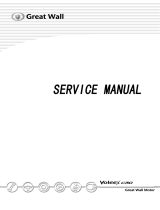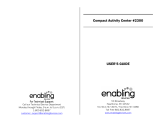
Introduction
41
✽✽
NOTICE
Your New Vehicle Limited
Warranty may not cover damage to
the fuel system and any perform-
ance problems that are caused by
the use of fuels containing methanol.
Gasoline containing MMT
Some gasoline contains harmful
manganese-based fuel additives
such as MMT (Methylcyclopentadi-
enyl Manganese Tricarbonyl).
Kia does not recommend the use of
gasoline containing MMT.
This type of fuel can reduce vehicle
performance and affect your emis-
sion control system.
The malfunction indicator lamp on
the cluster may come on.
Do not use methanol
Fuels containing methanol (wood
alcohol) should not be used in your
vehicle. This type of fuel can reduce
vehicle performance and damage
components of the fuel system.
Fuel Additives
Kia recommends that you use good
quality gasolines treated with detergent
additives such as TOP TIER Detergent
Gasoline, which helps prevent deposit
formation in the engine. These gaso-
lines will help the engine run cleaner
and enhance performance of the
Emission Control System. For more
information on TOP TIER Detergent
Gasoline, please go to the website
(www.toptiergas.com).
For Customers who do not use TOP
TIER Detergent Gasoline regularly, and
have problems starting or the engine
does not run smoothly, additives that
you can buy separately may be added
to the gasoline. If TOP TIER Detergent
Gasoline is not available, one bottle of
additive added to the fuel tank at 7,500
miles or every engine oil change is rec-
ommended. Additives are available
from your authorized Kia dealer along
with information on how to use them.
Do not mix other additives.
Operation in foreign countries
If you are going to drive your vehicle in
another country, be sure to:
• Observe all regulations regarding
registration and insurance.
• Determine that acceptable fuel is
available.
No special break-in period is need-
ed.By following a few simple precau-
tions for the first 600 miles (1,000
km) you may add to the perform-
ance, economy and life of your vehi-
cle.
• Do not race the engine.
• While driving, keep your engine
speed (rpm, or revolutions per
minute) between 2,000 rpm and
4,000 rpm.
• Do not maintain a single speed for
long periods of time, either fast or
slow. Varying engine speed is
needed to properly break-in the
engine.
• Avoid hard stops, except in emer-
gencies, to allow the brakes to seat
properly.
• Don't let the engine idle longer
than 3 minutes at one time.
• Don't tow a trailer during the first
1,200 miles (2,000 km) of opera-
tion.
VEHICLE BREAK-IN
PROCESS

























